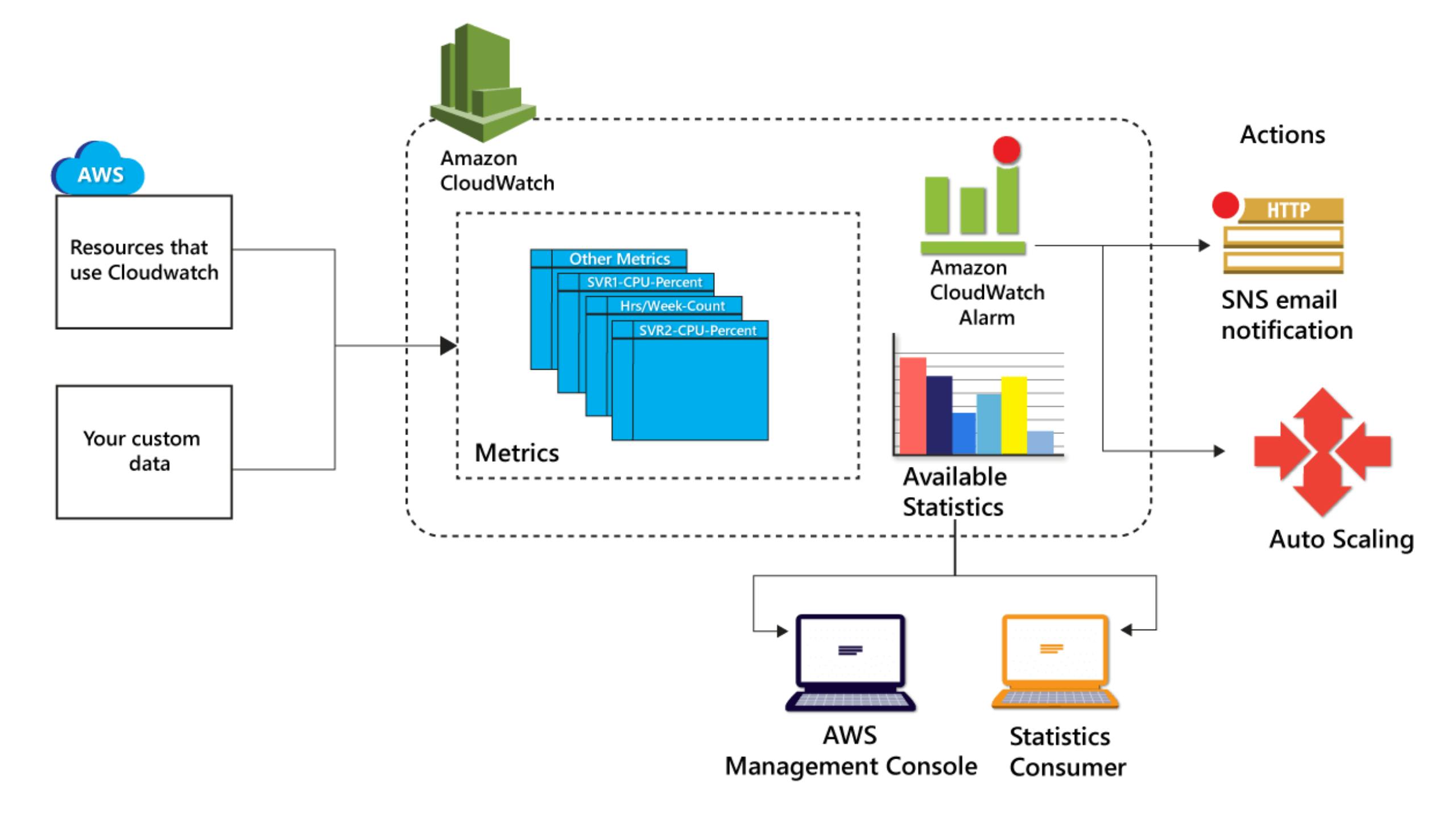In the world of cloud computing, managing and monitoring your infrastructure is crucial to maintaining its stability and performance. AWS CloudWatch is a monitoring and observability service offered by Amazon Web Services (AWS) that enables you to monitor your resources and applications in the AWS Cloud in real-time. In this blog post, we'll explore the features and benefits of AWS CloudWatch and how it can help you optimize your infrastructure.
What is AWS CloudWatch?
AWS CloudWatch is a monitoring service that provides real-time metrics and logs for AWS resources and applications. It can collect data from various AWS services, including Amazon EC2 instances, Amazon RDS databases, and Amazon S3 buckets, as well as custom applications and services.
With AWS CloudWatch, you can monitor metrics such as CPU utilization, network traffic, and disk I/O, as well as custom metrics that you define. You can also set alarms based on these metrics to notify you when certain thresholds are exceeded. In addition, AWS CloudWatch can collect and store log data from your applications and infrastructure, enabling you to troubleshoot issues and gain insights into system behavior.
AWS CloudWatch also integrates with other AWS services, such as AWS Lambda and AWS Elastic Beanstalk, to provide additional monitoring and analysis capabilities.

Features of AWS CloudWatch
Real-time monitoring: AWS CloudWatch provides real-time monitoring of your AWS resources and applications, enabling you to detect issues and take action before they impact your users.
Metrics and alarms: With AWS CloudWatch, you can collect and analyze metrics for your AWS resources and set alarms to alert you when certain thresholds are exceeded.
Logs and insights: AWS CloudWatch can collect and store log data from your applications and infrastructure, enabling you to troubleshoot issues and gain insights into system behavior.
Dashboards: AWS CloudWatch provides customizable dashboards that enable you to visualize and analyze your metrics and logs in real-time.
Integrations: AWS CloudWatch integrates with other AWS services, such as AWS Lambda and AWS Elastic Beanstalk, to provide additional monitoring and analysis capabilities.
Benefits of AWS CloudWatch
Improved reliability: By monitoring your AWS resources and applications in real-time, AWS CloudWatch can help you detect and resolve issues before they impact your users, improving the reliability of your infrastructure.
Cost optimization: AWS CloudWatch enables you to monitor your resource utilization and identify opportunities to optimize your infrastructure, reducing costs and improving efficiency.
Scalability: With AWS CloudWatch, you can easily monitor and scale your resources as needed to meet changing demand.
Improved security: AWS CloudWatch provides real-time monitoring and analysis of your infrastructure, enabling you to detect and respond to security threats quickly.
Conclusion
AWS CloudWatch is a powerful monitoring and observability service that can help you optimize your AWS infrastructure for reliability, cost, scalability, and security. With real-time monitoring, customizable dashboards, and integrations with other AWS services, AWS CloudWatch provides the tools you need to monitor, analyze, and optimize your infrastructure. Whether you're running a small application or a large-scale enterprise system, AWS CloudWatch can help you keep your infrastructure running smoothly and efficiently.
Thank you for reading this blog and if any queries or if any corrections to be done in this blog please let me know.
contact us in Linkedin ,Twitter or email-id gurucharanu716@gmail.com
